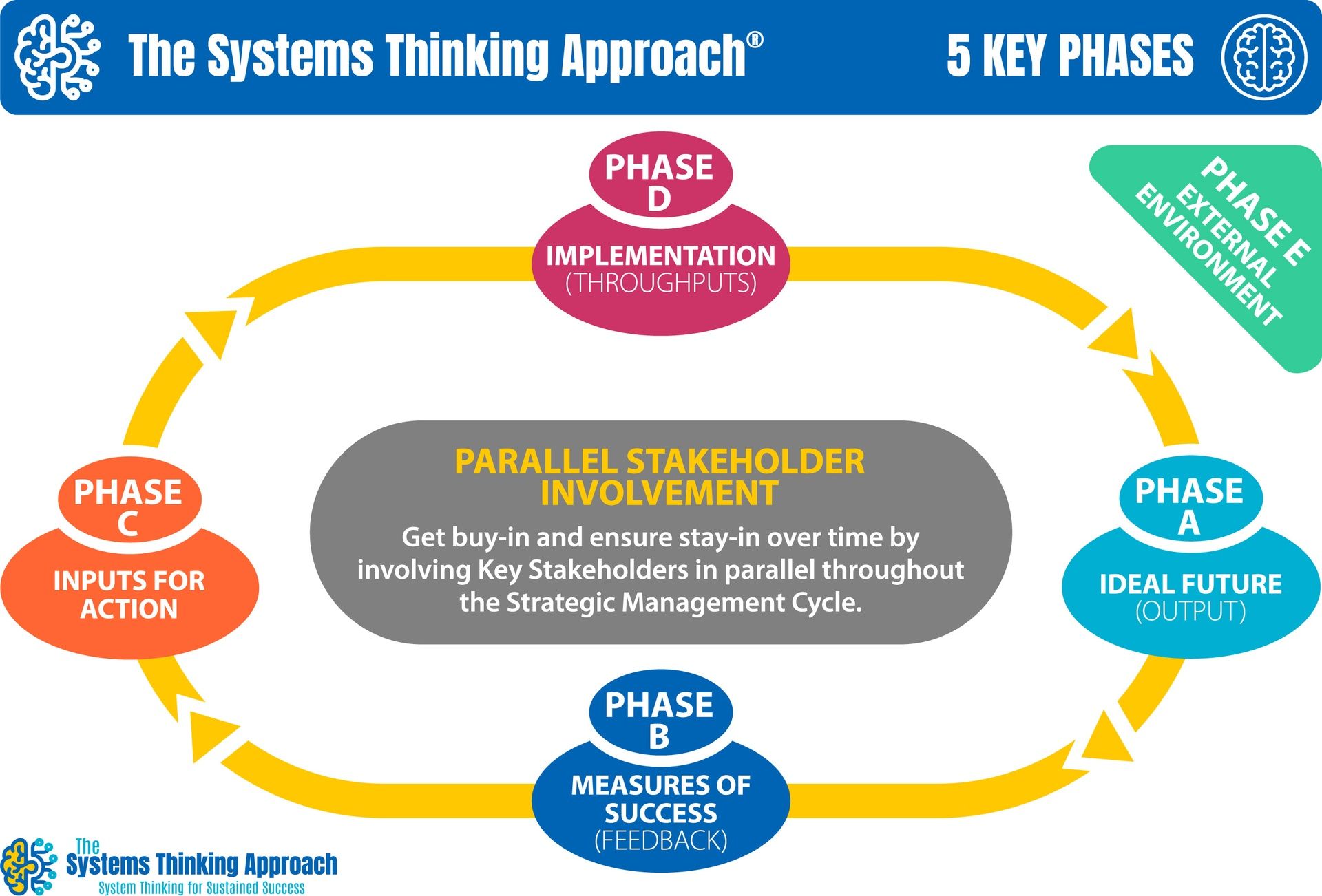Why all the excitement over Systems Thinking?
Systems exist everywhere you look. Organizations, teams, departments, families, individuals, governments, our planet, trees, weather, health care, sports teams, heating, electrical, transportation, communication, banking...
Systems influence each other. Instead of looking at your organization from a "silo" mentality, Systems Thinking ensures everyone in the organization works together towards common goals.
Systems have basic rules. Since we live and work within systems, we will be more successful if we understand the rules. And use them to our advantage!
What is Systems Thinking?
Systems are made up of a group of interrelated components that work together to achieve a goal.
Systems Thinking is a simple and holistic view of how systems like individuals, teams and organizations work.
By using Systems Thinking, it is possible to anticipate many unintended consequences, identify multiple leverage points and increase the range of solutions. Making you and your organization rise above the competition.
A system is a set of parts that work together for the overall objective of the whole.
The Systems Thinking Approach® is shown in the diagram:
The questions associated with each phase are:
Phase A: Where do we want to be? (Ideal Future)
Phase B: How will we know when we get there? (Measures of Success)
Phase C: Where are we now? (Inputs/Current State)
Phase D: How do we get there? (Implementation)
Phase E: Ongoing: What will or may change in the environment in the future? (External Environment)
Systems Thinking is a high-level way of thinking.
It is a process that defines the manner in which people think about, assess, view, and create the future for themselves and others.
It is an intentional, comprehensive and rational process.
Systems Thinking is a different way of thinking that allows us to move beyond looking at the world through a “mechanical model” lens to a view that serves our complex, inter-related world.
Problems that are created by our current level of thinking can’t be solved by that same level of thinking.
- Albert Einstein
Rules of Systems
Interconnectedness - Systems impact other systems
Purpose - Parts work together for a common shared objective
Synthesis - Understand the whole, the parts and their relationships at the same time
Feedback - Constant loops provide feedback in order to adapt
Causality - Cause and effect are not necessarily closely related
Flexibility - Goals can be achieved in more than one way
Entropy - All systems have a tendency toward decline
Hierarchy - Systems are nested within other systems
Systems Thinking can be used at any level in your organization: executive, middle management or staff. It can be applied to work or personal lives.
It allows you to be creative. To see both the big picture and the details (without getting stuck in the details) and also assess the unintended consequences, like potential impacts on other teams and projects.
Strategic Thinking includes creating a direction for the organization, as well as, managing the implications of actions at an operational level.
It challenges conventional thinking to foster improved decision making throughout the organization.
Henry Mintzberg wrote in 1994 that strategic thinking is more about synthesis (i.e., “connecting the dots”) than analysis (i.e., “finding the dots”).
Our world is increasingly more complex. We need this outcome-oriented approach to thinking to increase our strategic skills for dealing with this complexity and, thus, become better leaders and individual contributors.
Everyone needs Systems Thinking to survive in our fast paced, constantly changing world!
Why Systems Thinking is Important
Achieve remarkable results - Thinking impacts your actions. Using systems thinking will change your actions and therefore, your results.
Simplifies the difficult - Systems thinking helps you rise above the problem. You find a solution that you couldn't see before.
Informed bias-free decisions - Systems thinkers limit assumptions. They ask questions to seek clarity. They approach problems with knowledge from their past and fresh, unbiased eyes.
Enhanced foresight - Systems thinkers are pragmatic leaders. They are capable of keeping their eyes on the future and today at the same time. They can both create strategies and execute simultaneously.
Increased innovation - Systems thinkers are not content with the status quo. They want to continuously improve because strategic thinking is an interative process.
Expanded influence - Systems thinking increases the people who listen to you and want to follow you. It is essential for leadership.
Let's talk Systems Thinking!
Systems Thinking makes complex problems easier to solve, reduces issues with other departments and teams, and helps you become comfortable with ambiguity.
Systems Thinking changes your results, reduces unintended consequences and increases your influence.
If you want better decisions, increased innovation and integrated solutions at all levels of the organization - call me!
Systems Thinking helps you focus on the "big picture" while still handling the details.
I'd love to talk about how Systems Thinking can help your work and life!
Systems Thinking can be applied to strategic planning, implementing strategy, problem solving, life planning, departmental planning, communication, leadership development, marketing, employee training, interviewing, team building – as you can see, the list is virtually endless!
Systems Thinking can be learned by anyone!



